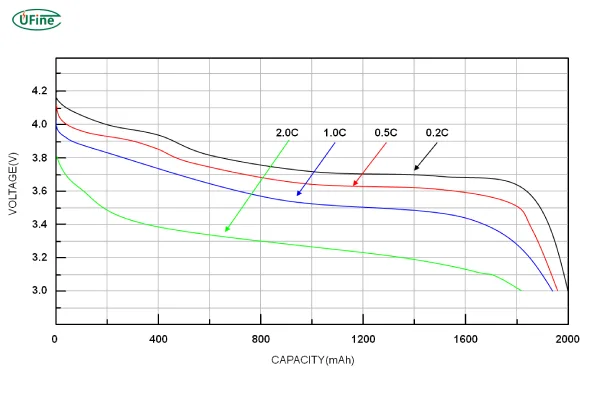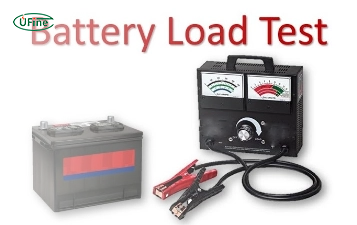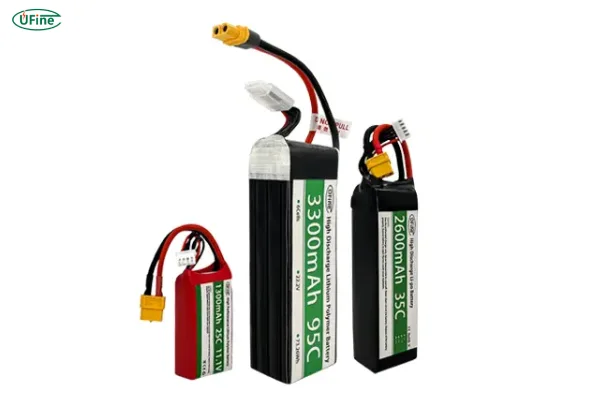
- Part 1. What is a LiPo battery discharge rate?
- Part 2. Key terms you need to know
- Part 3. How to calculate LiPo battery discharge rate
- Part 4. How to convert mAh to Ah properly
- Part 5. Continuous vs burst discharge rate
- Part 6. How to match discharge rate with device needs
- Part 7. What happens if you exceed the discharge rate?
- Part 8. How to read a LiPo battery label
- Part 9. Useful tools to calculate discharge rate
- Part 10. Typical C-ratings by application
- Part 11. Advanced discharge techniques and tips
- Part 12. Safety tips for high-discharge liPo use
- Part 13. FAQs
- Part 14. Conclusion
When working with lithium polymer (LiPo) batteries in drones, RC cars, or other electronics, one of the most critical performance factors to understand is the LiPo battery discharge rate. Misjudging it can lead to underpowered performance, battery damage, or even fire hazards.
In this guide, we’ll cover everything you need to know about the LiPo battery discharge rate—including how to calculate it, what it means in real-world scenarios, and how to choose the right battery for your application. We’ll also show you how Ufine Battery, a professional LiPo battery manufacturer, ensures accurate, safe, and high-performance batteries built around reliable discharge rate ratings.
Part 1. What is a LiPo battery discharge rate?

The discharge rate of a LiPo battery determines how fast the battery can safely deliver current to your device. It’s usually expressed as a C-rating (e.g., 25C, 50C), which helps you calculate the maximum current the battery can supply.
Think of it like water flowing from a tank: the discharge rate is how quickly the water (electricity) can be released. A battery with a low discharge rate may not keep up with demand from high-powered devices like drones, leading to voltage sag or system failure.
Part 2. Key terms you need to know
Before diving into calculations, let’s define some important terms:
- Capacity (mAh or Ah): The total energy the battery can store. 1000 mAh = 1 Ah.
- C-Rating: A multiplier used to calculate the maximum discharge current.
- Continuous C-Rating: The sustained current the battery can provide safely.
- Burst C-Rating: The peak current the battery can deliver for a few seconds (usually 5–10 seconds).
- Discharge Current: The amount of current (in Amps) the battery delivers to the device.
Part 3. How to calculate LiPo battery discharge rate
Here’s the core formula:
Maximum Discharge Current (Amps)=Battery Capacity (Ah)×C Rating
Let’s apply this with an example:
- Battery Capacity: 2200 mAh = 2.2 Ah
- C-Rating: 25C
Max Current=2.2×25=55 Amps
This means the battery can safely provide 55A of continuous current. Exceeding this limit risks damage.
Part 4. How to convert mAh to Ah properly
LiPo batteries are commonly rated in mAh (milliamp-hours). But for discharge rate calculations, you must convert mAh to Ah:
1000 mAh=1 Ah
3000÷1000=3 Ah
Part 5. Continuous vs burst discharge rate
Batteries often have two discharge ratings:
- Continuous Discharge Rate (e.g., 50C): The battery can maintain this current safely throughout the discharge cycle.
- Burst Discharge Rate (e.g., 80C): The battery can handle short bursts (usually 5–10 seconds) at higher loads.
Example:
A 2200mAh 25C/50C battery delivers:
- 2.2 × 25 = 55A continuous
- 2.2 × 50 = 110A burst
Burst ratings are helpful for short, intense demands like rapid drone takeoffs.
Part 6. How to match discharge rate with device needs
To avoid overloading your battery, calculate the current draw of your motor or device and match it to your battery’s output.
Example:
Your drone’s motors and ESCs draw 60A
You choose a 2200mAh battery
Required C-rating =60÷2.2=27.27C
So, you’d need a battery rated at at least 30C for safe operation.
Tip: Always add a buffer. Ufine Battery recommends choosing a C-rating that exceeds your calculated minimum by 20–30%, especially for high-drain applications.
Part 7. What happens if you exceed the discharge rate?
Pushing a battery beyond its rated discharge rate can lead to serious issues:
- Overheating
- Battery swelling (puffing)
- Reduced cycle life
- Permanent internal damage
- Fire or explosion risk
This is why choosing quality LiPo batteries with accurate discharge ratings, like those from Ufine Battery, is essential. Ufine conducts strict performance testing and uses premium materials to ensure each cell performs as specified under real-world conditions.
Part 8. How to read a LiPo battery label
Here’s an example label and how to decode it:
3S 2200mAh 50C / 100C LiPo Battery
3S: 3 cells in series = 11.1V (each cell = 3.7V nominal)
2200mAh: Capacity = 2.2 Ah
50C / 100C:
2.2 × 50 = 110A continuous
2.2 × 100 = 220A burst
Ufine Battery clearly labels all their LiPo products with voltage, capacity, continuous/burst C-ratings, and part numbers for easy matching with devices.
Part 9. Useful tools to calculate discharge rate
To avoid manual errors, use these tools:
- Online C-rating calculators: Just plug in capacity and C-rating.
- ESC/motor spec sheets: Help you determine current draw.
- Telemetry systems: Some RC controllers and drones display real-time current and voltage draw.
- Ufine Battery technical support: Ufine’s engineering team offers assistance in choosing the right discharge-rated battery for your application.
Part 10. Typical C-ratings by application
| Application | Recommended C-Rating |
|---|---|
| FPV Racing Drones | 50C – 100C |
| RC Cars (1/10 Scale) | 25C – 60C |
| Airsoft Guns | 15C – 30C |
| Robotics Projects | 10C – 40C |
| RC Airplanes | 20C – 50C |
Ufine Battery offers custom battery solutions across all these ranges, ensuring you get exactly the right discharge rating for your device.
Part 11. Advanced discharge techniques and tips
Want to push performance further? Try these:
- Parallel Batteries: Combine two identical LiPos to double capacity while maintaining voltage and increasing discharge ability.
- Example: Two 2200mAh 25C batteries → 4400mAh at 25C = 110A
- Series Batteries: Increase voltage while keeping capacity and C-rating the same.
- Capacitors: Use power capacitors to help handle burst spikes and protect batteries.
- Cooling: Use fans or heat sinks to prevent overheating during high-discharge cycles.
Ufine Battery offers modular battery packs that can be configured in both parallel and series arrangements for custom applications.
Part 12. Safety tips for high-discharge liPo use
High-discharge batteries come with risk—safety is critical:
- Never charge unattended
- Use a smart balance charger
- Transport in fireproof LiPo bags
- Store at 3.7–3.85V per cell (storage voltage)
- Monitor temperature during use
- Retire puffed or damaged batteries immediately
Ufine Battery incorporates multiple protection layers, such as short-circuit protection, temperature sensors, and precise cell balancing in their advanced packs, helping customers reduce risk and extend battery life.
Part 13. FAQs
Q1: Can I use a battery with a higher C-rating than needed?
Yes! Higher C-ratings won’t hurt your device. They offer better performance and lower heat but may cost more.
Q2: What’s better for longevity—higher or lower discharge rate batteries?
Higher-rated batteries tend to stay cooler under load and suffer less wear, improving longevity if not overcharged.
Q3: What happens if I use a battery with too low a C-rating?
You risk overheating, puffing, or damage. The battery may also shut down or sag in voltage under high load.
Q4: Can I calculate C-rating if I only know the max current my device needs?
Yes. Use:
C=Battery Capacity (Ah)/Max Current Draw
Q5: Does Ufine Battery offer high-discharge custom batteries?
Absolutely. Ufine Battery specializes in custom LiPo batteries, including high-discharge, high-capacity, or ultra-compact designs for drones, robotics, and industrial applications.
Part 14. Conclusion
The LiPo battery discharge rate is a vital specification you can’t afford to overlook. Always calculate your system’s current draw and ensure your battery’s C-rating is sufficient. Understanding how to convert capacity and calculate safe discharge limits will help you prevent battery failure, improve performance, and extend battery lifespan.
For high-quality, safe, and reliable LiPo batteries, consider working with trusted manufacturers like Ufine Battery. With years of experience, strict quality control, and engineering support, Ufine delivers tailored energy solutions that meet even the most demanding discharge requirements.
Related Tags:
More Articles

Battery Load Test: A Comprehensive Guide
Step-by-step battery load test guide for car, solar & industrial use. Learn how to load test a battery, interpret voltage charts, and avoid common mistakes.
The Comprehensive Guide to Battery Balancing and Battery Balancer
Discover how battery balancers improve lithium battery performance, lifespan, and safety. Learn types, functions, and tips to choose the right balancer.
What Is the Best Voltage for a Chainsaw Battery?
Compare 12V-80V chainsaw batteries for light pruning, medium firewood, and professional cutting. See best battery chainsaw with runtime charts and safety tips.
Lithium VS. Alkaline Batteries: A Comprehensive Comparison
Lithium batteries last 3–7× longer than alkaline and perform better in cold weather. Compare lifespan, cost, safety, and best uses to choose the right battery.
Comparing Lithium-Sulfur and Lithium-Ion Batteries: Which is Right for You?
Compare lithium-sulfur (Li-S) and lithium-ion batteries on energy, lifespan, cost, safety, and applications. Best choice for drones, EVs, and electronics.



